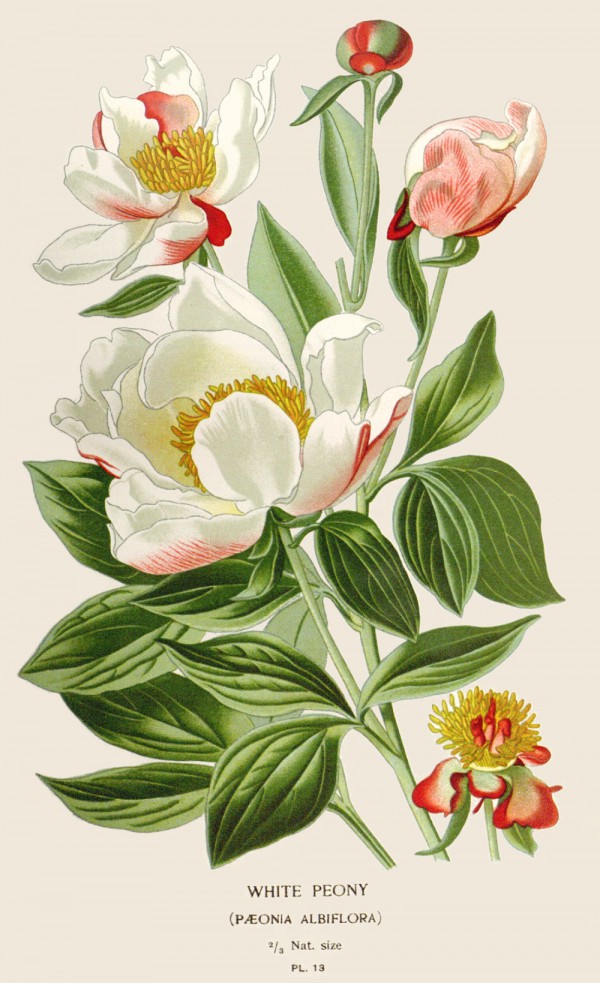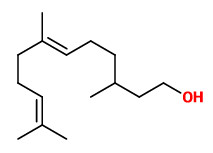Paeonia lactiflora Pall. - syn.Paeonia albiflora Pall. - Paeoniaceae - 芍药 shao yao (chin.), Chinese peony, white peony, Chinesische Pfingstrose, Milchweiße Pfingstrose
Perennial herb, up to 70cm tall, native to central and eastern Asia from eastern Tibet across northern China to eastern Siberia, widely cultivated as an ornamental; flowers single, white or pink (in wild plants), or varying in color and single or double (in cultivated plants).
http://www.efloras.org/florataxon.aspx?flora_id=2&taxon_id=200008034
There are several cultivars with showy flowers, some fragrant and some not.
http://de.wikipedia.org/wiki/Paeonia_lactiflora
„Phenyl ethyl alcohol and citronellol are the major volatile constituents of peony flowers which give the 'rosy' character to their fragrance. The low boiling fraction [of the pentan extract from the petals] consisting of hexenal and hexenol isomers is responsible for the 'green' odour character. The extract lact monoterpene hydrocarbons, but contains large amounts of waxes, stearoptenes and fatty acids and esters.“
Other volatiles were methylheptenone, α-terpineol, citronellal, geraniol, farnesol, 2,3-dihydrofarnesol, nerolidol, benzaldehyde, guaiacol, and 1,4-dimethoxybenzene e.g.
[Volatile constituents of peony flowers., Kumar, N., Motto, M. G., Phytochemistry, Vol.25(1), 1985, 250-253]
„Twenty-five volatile compounds were considered as the major scent components of 16 strong scented cultivars, nine of which were more than 10% in according cultivars, including six monoterpenoids (α-pinene, linalool, myrtenal, citronellol, citral, and geraniol), one benzenoids/phenylpropanoids (2-PE), and two fatty acid derivatives (hexanal and 2-hexenal) (Table S4). Hexanal and 2-hexenal were the components detected in all 17 cultivars. Geraniol was detected in 15 cultivars. Linalool and citral were found in 13 cultivars. Citronellol and 2-PE were also widely detected in 11 cultivars.“
[Zhao, Qian, et al. „Volatile composition and classification of paeonia lactiflora flower aroma types and identification of the fragrance-related genes.“ International journal of molecular sciences 24.11 (2023): 9410] https://www.mdpi.com/1422-0067/24/11/9410
„Radix Paeoniae is the dried root of Paeonia lactiflora … Uses described in pharmacopoeias and in traditional systems of medicine: As an analgesic, anti-inflammatory and antispasmodic drug in the treatment of amenorrhoea, dysmenorrhoea, and pain in the chest and abdomen. Radix Paeoniae is also used to treat dementia, headache, vertigo, spasm of the calf muscles, liver disease, and allergies, and as an anticoagulant.“
[Radix Paeoniae, WHO Monographs on Selected Medicinal Plants - Volume 1, World Health Organization, Geneva, 1999]
http://apps.who.int/medicinedocs/en/d/Js2200e/21.html
„The root of Paeonia lactiflora PALL (PL, Family Paeoniaceae) has been used frequently as an antipyretic and anti-inflammatory agent in traditional medicines of Korea, China and Japan. To evaluate antiallergic effect of PL, we isolated its main constituents, paeoniflorin and paeonol, and evaluated in vivo their inhibitory effects against passive cutaenous anaphylaxis (PCA) reaction induced by IgE-antigen complex and scratching behaviors induced by compound 48/80. PL, paeoniflorin and paeonol potently inhibited PCA reaction and scratching behaviors in mice. Paeoniflorin exhibited the most potent inhibition against scratching behaviors and the acetic acid-induced writhing syndrome in mice. Paeonol most potently inhibited PCA reaction and mast cells degranulation. These findings suggest that PL can improve IgE-induced anaphylaxis and scratching behaviors, and may be due to the effect of its constituents, paeoniflorin and paeonol.“
[Antiallergic effect of the root of Paeonia lactiflora and its constituents paeoniflorin and paeonol., Lee, B., Shin, Y. W., Bae, E. A., Han, S. J., Kim, J. S., Kang, S. S., Kim, D. H., Archives of pharmacal research, Vol.31(4), 2008, 445-450]
The dried roots, Paeoniae radix rubra (red roots) and Paeoniae radix alba (white roots) are used in Traditional Chinese Medicine (colors refering to the roots, not the flowers). White roots ar used to treat headache, dizziness with visual disturbances, pain of different origin, spontaneous perspiration and night sweats. Red roots are used to treat infectious diseases with exanthemes, bleeding from the mouth and nose, menstrual pain, boils and skin ulcers.
[Hagers Handbuch der Pharmazeutischen Praxis, Springer 2010]
The roots, Chinese drug name PhPRC 2010: Paeoniae radix rubra, chishao, 赤芍, are used to treat febrile infections, red tongue, hemoptysis, petechiae, acne and furunculosis, post-traumatic pain and swelling, dysmenorrhea, abdominal pain, red and swollen eyes. PhPRC 2010 demands min. 1.8% paeoniflorin.
http://www.lfl.bayern.de/mam/cms07/publikationen/daten/merkblaetter/chinese_medicinal_plants__cultivated_bavaria_lfl-merkblatt.pdf

P.lactiflora as P.albiflora: Step, E., Bois, D., Favourite flowers of garden and greenhouse, vol.1, t.13 (1896-1897)
http://www.plantillustrations.org/species.php?id_species=737822
Paeonia lactiflora, Alpengarten Belvedere Wien
© Rolf Marschner (2014),
www.botanische-spaziergaenge.at


